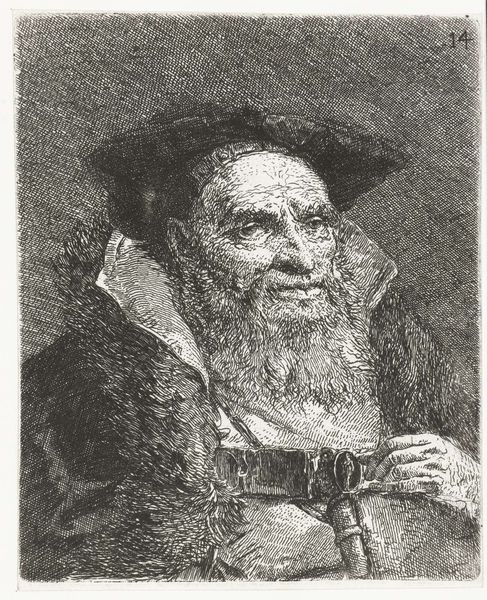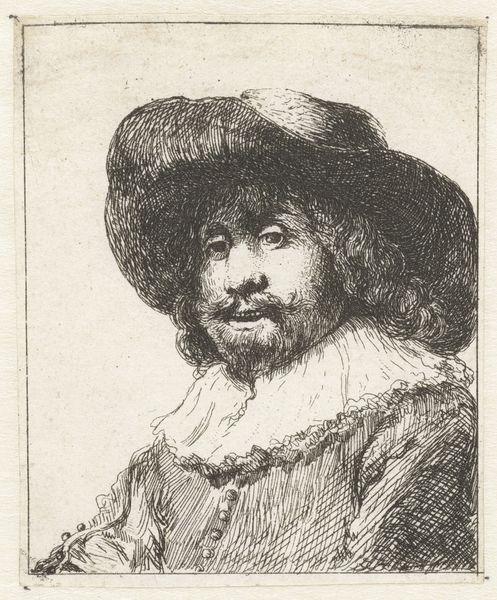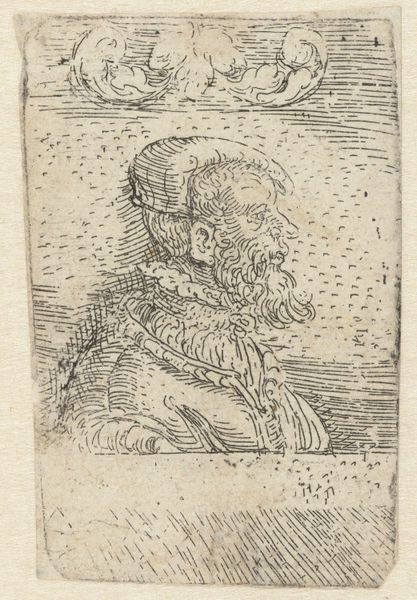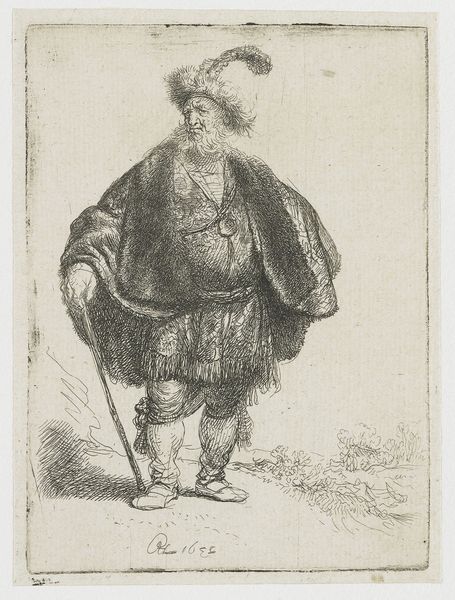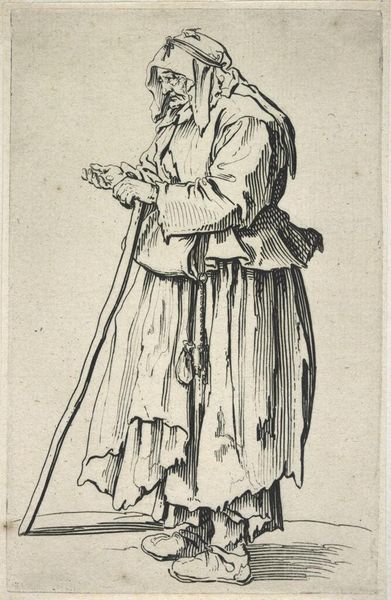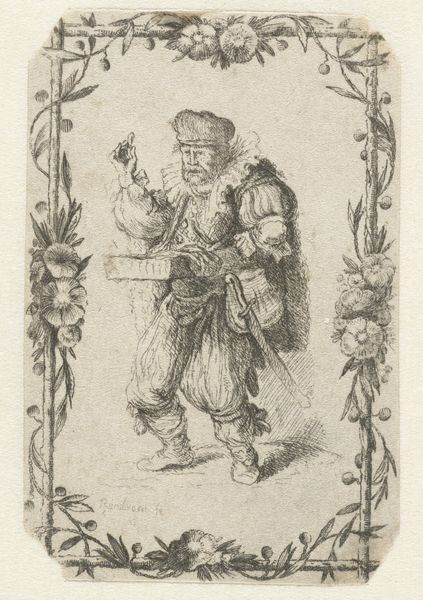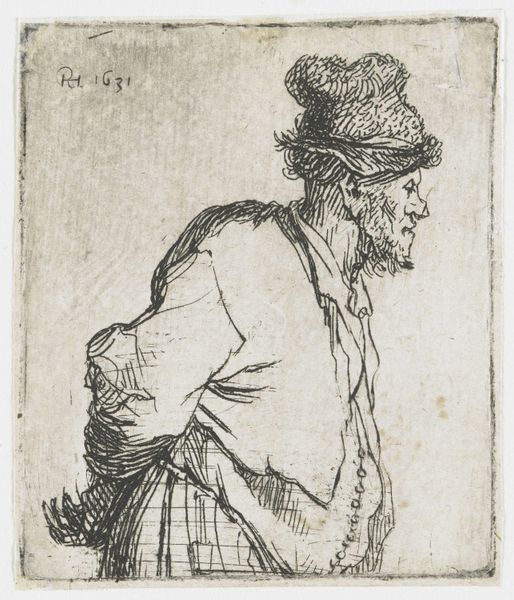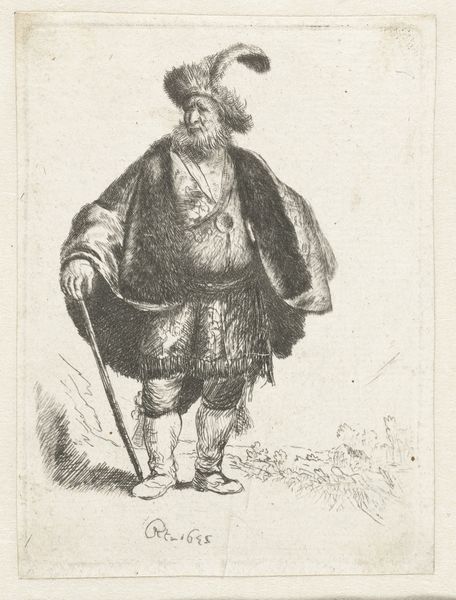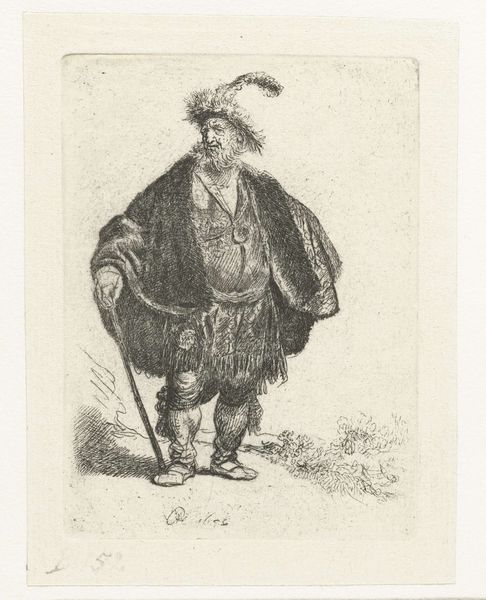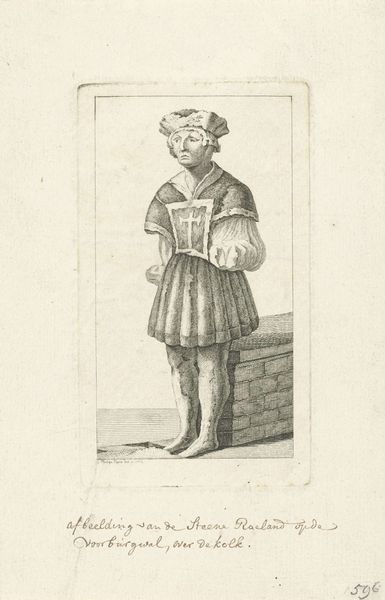
Dimensions: height 138 mm, width 110 mm
Copyright: Rijks Museum: Open Domain
Editor: We are looking at *Nar met groenteketting* by Louis Bernard Coclers, an etching print dated somewhere between 1756 and 1817. The "Nar," or Fool, is lavishly dressed, but it's his wry, slightly unsettling smile that really catches my attention. What symbolic reading might we draw from such a figure in this context? Curator: Well, consider the layering of symbols. The "Nar" archetype itself is potent – the figure of playful wisdom, licensed to mock societal norms. Now couple that with the “groenteketting”, the chain of vegetables, that he carries. The produce represents abundance but presented as a garland, almost mocking nobility? How does that strike you? Editor: It's like the abundance is both a celebration and a satire – a playful skewering of status through its accoutrements. Is that typical for the time period? Curator: Absolutely! Think about the tradition of Memento Mori images, a reflection on human mortality. It also evokes notions of vanity, the transient nature of earthly things. What's lasting here; the man or his symbolic "vegetable state"? Editor: So it becomes more than just a funny portrait. It is a moment to contemplate ephemeral earthly pleasures and fleeting nature? Thank you for helping me delve deeper into these ideas. Curator: And for me it is reminder of our human foibles. These prints act as miniature time capsules filled with ever-relevant social commentary.
Comments
No comments
Be the first to comment and join the conversation on the ultimate creative platform.
